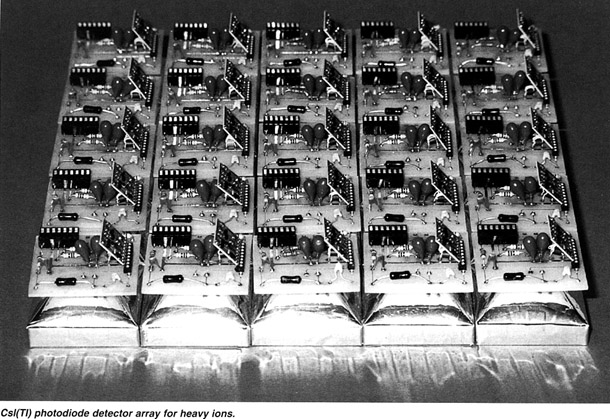 |
Charged particles such as electrons, muons or atomic nuclei (e.g. a-particles) lose energy through Coulomb interactions with the atomic electrons in the surrounding matter. When selecting a detector for charged particles, the primary consideration is the type of particle to detect. |
||||||||||
 |
||||||||||
| Weakly Penetrating Particles This includes low energy electrons, protons, a-particles and heavy ions. The rate of energy loss in matter increases as the charge and mass of the particle increase, but the conversion of particle energy in scintillation light decreases. The number of photons produced by an 5.4 MeV a-particle is only 70-80% of a gamma photon with the same energy. Apart from the emitted energy and the specific scintillator, the energy resolution for particles also depends on the surface treatment of the material. The following aspects should be considered. The entrance window of the detector should be very thin so that the incident radiation is not absorbed; aluminized mylar windows are normally used. For heavy ions, the detector is best operated in a light-tight environment without a window. The thickness of mylar windows can vary between 1.5 mm and 100 m m. |
||||||||||
| BACK TO TOP | ||||||||||
| Minimum
Ionizing Particles Particles in this group are usually single charged with a low mass and a high energy. Their energy loss per unit path length is small. Common examples of minimum ionizing particles are cosmic muons and fast electrons. In a plastic scintillator, minimum ionizing particles lose several MeV per cm material. Applications include calorimetry and electron spectroscopy. Entrance window material and thickness are usually not that important since the particles normally pass through the window and the entire scintillator. |
||||||||||
| BACK TO TOP | ||||||||||
Select a link for more information: |
||||||||||
|
Interactions in Scintillation Materials |
||||||||||